Neuroscience & The Art Of Teaching | Uncommon Sense Of Teaching | How We Teach
Table of contents
Let’s explore how neuroscience and the art of teaching go hand in hand. Teaching has been called an art, and yet the art of teaching remains elusive.

Neuroscience & the art of teaching — Uncommon Sense Of Teaching
Neuroscience is vital because it can give us far more direct insight into the foundations of learning and education than any other discipline. Neuroscience supports an understanding of the art of teaching and learning (and vice versa) both directly and via its connections to psychology.
Building Memory
Let’s understand what’s going on, take a step back, and look at the fundamental building block of our brains — the biological cell called a neuron.
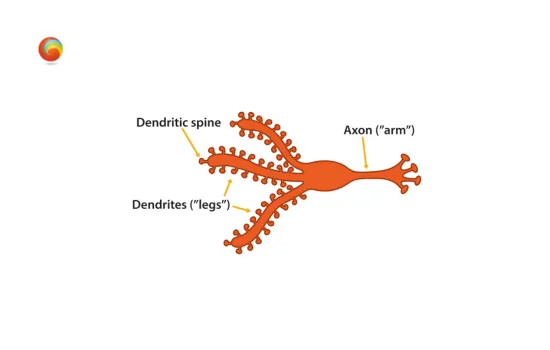
Neuroscience — The structure of a neuron
Neurons, if you look only at their main parts, are simple. They have legs, which are called dendrites. The legs have lots of spines on them, almost like a cactus (technically, these are called dendritic spines). And they have an arm, which is called an axon. When students are actively focusing on their learning, they are beginning the process of making connections between neurons.
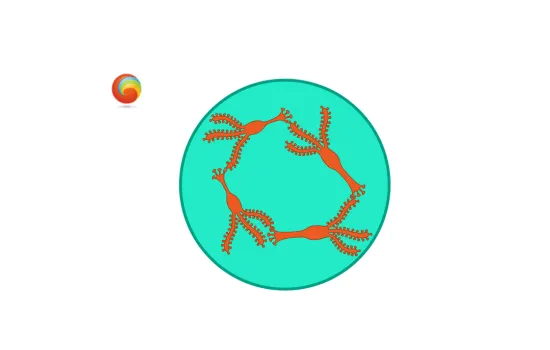
Neuroscience — The spine of one neuron comes up against the axon of another neuron
Once a neuron involved in the learning process comes close enough to a neighboring neuron, a signal jumps across the narrow gap (synapse) between the two neurons. That signal, as it passes from neuron to neuron, is what forms our thoughts — it’s the foundation of our learning.
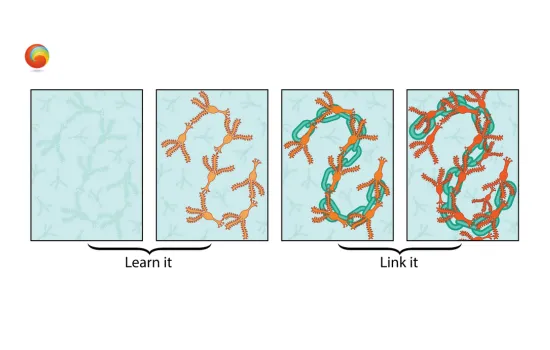
As a student works in active ways with the new concept or technique, links solidify in long-term memory and form the basis of proficiency.
Long-Term Memory Vs Working Memory
Long-term memory is what it sounds like — it holds the information we’re able to store and bring back to mind from weeks, months or even years before. But working memory — that temporary holding pattern for thoughts — is different from long-term memory.
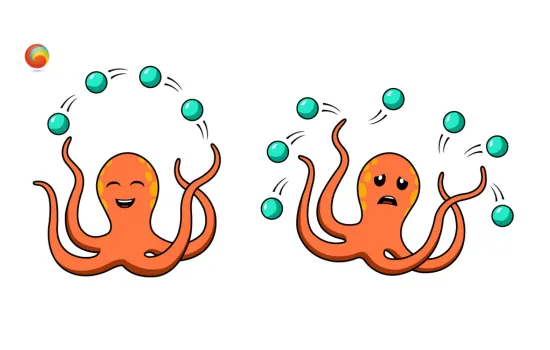
Neuroscience and the art of teaching — Handling multiple thoughts in a working memory
Rather than sets of links that reside happily in the neocortex, working memory is more like an octopus tossing a set of balls. These balls represent thoughts that bounce over and over again, as long as you are holding the ideas in working memory. Most people can hold a maximum of about four pieces of information in working memory at once. But if they get distracted or try to keep too many balls in mind at once, the thoughts can all fall out!
But getting the information into long-term memory can be difficult, well the retrieval practice is one of the best techniques for strengthening new information in long-term memory.
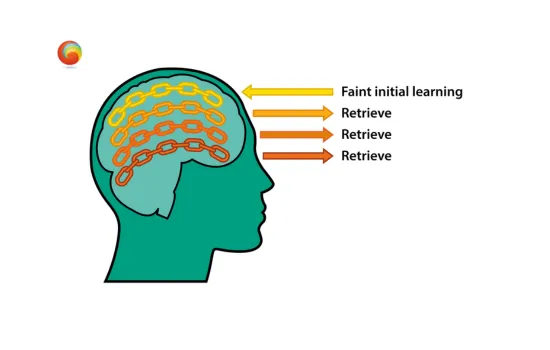
Neuroscience and the art of teaching — Retrieval Practice
Retrieval practice means drawing ideas you’re starting to learn from your mind rather than simply looking at the answer. Good examples of retrieval practice include using flash cards.
Ready to explore the remarkable interplay between neuroscience and education? Click the link below to read more on our blog page and unlock the secrets to empowered learning!
Read more on our blog page here! You will learn about -
Inclusivity and Differentiation: Tailoring Education for All
Learn about the importance of inclusivity, reaching out to include those who are commonly marginalized or excluded. Explore differentiation, a method that adapts teaching approaches to meet individual needs. Delve into the core of differentiation - scaffolding, which supports students' readiness.
Active Learning: Engaging Minds
Dive into the world of active learning, where students participate actively in the learning process through activities and discussions. Understand how active learning fosters higher-order thinking and keeps students engaged with the subject matter.
Two Important Ways of Remembering
Unravel the dual memory systems - declarative and procedural memory. Explore how these systems help students grasp concepts in different ways, providing a more comprehensive understanding of the material.
Using the Declarative System to Get Information into Long-Term Memory
Embark on a metaphorical story of the brain's trio - the conductor (working memory), Hip (the hippocampus), and Neo (neocortex). Discover how information moves from working memory into long-term memory, forming the foundation for profound learning experiences.
Uncommon Sense of Teaching: Insights from Neuroscience and the Art of Thinking Clearly
If you're eager to deepen your understanding of mental models and decision-making, don't forget to check out our previous blog on the art of thinking clearly. Gain valuable insights into the art of decision-making and enhance your cognitive processes.
Thank you for joining us on this enlightening journey through the world of neuroscience and education. Stay tuned for more insightful content in our upcoming blogs!
Frequently Asked Questions
How does neuroscience influence teaching?
- Neuroscience influences teaching by providing insights into how the brain learns and processes information. It helps educators understand the neural mechanisms behind learning, memory, attention, and motivation. Neuroscience also highlights the importance of factors like active engagement, differentiation, inclusivity, and retrieval practice in promoting deeper understanding and long-term retention of knowledge.
What is the connection between neuroscience and education?
- The connection between neuroscience and education lies in how insights from neuroscience can inform and improve educational practices. By studying the brain and its processes, neuroscience provides valuable information on how students learn, retain information, and develop cognitive skills. Neuroscience offers a scientific foundation for understanding the cognitive and neural mechanisms underlying learning, ultimately bridging the gap between scientific research and educational practice.
How is art and neuroscience related?
- Art and neuroscience are related in several ways. By studying brain activity and imaging techniques, neuroscience can shed light on the neural processes involved in perceiving, creating, and experiencing art. This interdisciplinary approach helps us understand the cognitive and emotional impact of art on individuals.
Why is neuroscience used in education?
- Neuroscience is used in education to gain a deeper understanding of how the brain learns and processes information. By studying the neural mechanisms underlying learning, memory, attention, and motivation, educators can tailor their teaching methods to optimize student engagement, retention, and academic performance.
How has the book “Uncommon Sense of Teaching” influenced our approach to education?
- The book “Uncommon Sense of Teaching” has significantly influenced our approach to education by integrating insights from neuroscience. We have learned the significance of active learning, differentiation, and inclusivity in creating engaging and inclusive learning environments.
